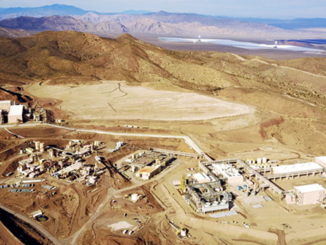By Ed Richardson – Thomas & Skinner / USMMA
The concept of recycling rare earth magnets has garnered considerable attention from research labs around the world. The challenge for each of these projects is to devise a way to economically recover rare earth elements from various magnetic devices at the end of their lives. The complexity of this challenge is daunting. Each application has different performance, and thus magnetic, specifications. Therefore, the particular grade of sintered NdFeB found in devices can vary widely. For instance, each manufacturer of hard drives has its own design and technical specifications. The design engineers at each hard drive company create hard drives to fit particular applications, without regard to the ease of recycling the hard drive. Theoretically, 8 different hard drives from the same manufacturer could have 8 different types of sintered neo magnets. Each might have a different assembly configuration, requiring different tools to disassemble the drive during recycling. Once the magnets are free from the hard drive, each will require a slightly different rare earth extraction methodology, depending on the alloy and exact chemistry. This complexity makes creating a standardized method for recycling sintered NdFeB magnets extremely taxing and difficult.
Since rare earths are key components to many consumer products, the process of rare earth recycling is highly dependent on a concept called “Urban Mining.” Urban mining is defined as the recovery of elements and compounds from waste materials and products. Urban mining is based on the fact that post-consumer electronic waste tends to be concentrated in densely populated regions like cities and other urban areas. This concentration enhances recycling efforts by providing higher levels of available material as compared to rural areas. Consumer electronics are increasingly becoming subject to urban mining practices— and with over 6.5 million metric tons of personal computers, computer monitors and peripherals, televisions, and mobile devices being generated in 2007 in the United States, Europe, China, and India—the supply available for “mining,” or recycling, is large and increasing. Some believe that the US stands in a particularly strong position in terms of urban mining:
“If the United States committed itself to meeting its critical materials needs in large part through recycling, there is no nation on earth that could match American resources. The United States has the largest “above-ground” mines of critical materials in the world, in the sense that this country’s supply of industrial scrap and end-of-life automobiles, electronics, and electronic appliances – whether they are in wreckers’ yards, land-fills, or Americans’ basements and attics – can’t be matched by any other nation. In essence, these “above-ground mines” make the United States the Saudi Arabia of critical materials. A well-developed recycling system could tap these mines for US critical materials security without limit.”
– Waste Management World, 2011
Certainly, the potential for urban mining of rare earths is tantalizing. To put use quantities in perspective, a Toyota Prius uses approximately 2.2 pounds of neodymium; some air conditioner units include about 30 grams of NdFeB magnets; and a permanent magnet, direct drive wind turbine requires approximately 2,000 pounds of neodymium iron boron magnets. A 2011 United Nations (UN) report on recycling rates of metals estimates that the end-of-life functional recycling (i.e., recycling in which the physical and chemical properties that made the material desirable in the first place are retained for subsequent use) for rare earths is less than 1 percent.
The concept of urban mining to recover valuable rare earths metals is an intriguing idea, but also one that comes with considerable challenges and economic hurdles. Since some form of disassembly of components is required in order to retrieve rare earth magnets, the cost of recycling is burdened with extremely high labor content. Also, the difficulty in separating rare earth metals (hydrometallurgy) is an additional cost burden. Certainly, government funded projects could take on the task of rare earth recycling for strategic reasons. One should keep in mind, however, that the lack of a domestic capability to convert rare earth oxides into pure metals likely makes even a government sponsored project a proposition without a clear path to a supply of rare earth metals, unless it includes overseas assistance. In sum, the current rare earth metal pricing levels cannot support commercial recycling operations, and the US lacks key processes required to recycle rare earth metals back into viable raw materials.
 About the Author
About the Author
Ed Richardson is vice president of Thomas & Skinner, and president of the United States Magnetic Materials Association (USMMA). He has more than 18 years of experience in industrial manufacturing and business-to-business marketing. He has a B.A. from DePauw University, where he was a Management Fellow. He also has an M.B.A. from Indiana University’s Kelly School of Business. Mr. Richardson has written numerous articles on rare earth supplies and their impact on the US magnet industry. He has been quoted in an array of news publications and media outlets, including The New York Times, The Washington Post, The Wall Street Journal, US News and World Report, The Financial Times, Bloomberg Business Week and NPR.



